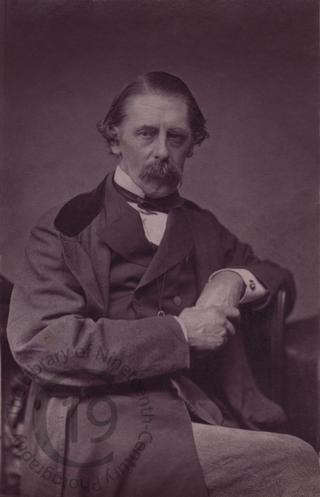
Sir Henry Thompson
A Woodburytype portrait of Sir Henry Thompson, who in 1873 operated unsuccessfully on Emperor Napoléon III, attempting to crush the stones in his bladder.
Born at Framlingham, Suffolk, in 1820, he was educated at University College, London, later graduating as a Bachelor of Medicine at the University of London. He was appointed Assistant Surgeon at University College Hospital in 1853, Surgeon in 1863, Professor of Clinical Surgery in 1866, and Consultant Surgeon in 1877. He was the author of Practical Lithotomy and Lithotrity, and other works connected with the same branches of surgery.
In 1862 he became widely known when he operated successfully on King Léopold I of Belgium, for which he was appointed Surgeon-Extraordinary to the king, and subsequently to his son, Léopold II, who conferred on him the rank of Commander of the Order of Léopold.
In 1873 he was summoned to Camden Place to operate on the exiled French emperor Napoléon III, but the malady proved to be too far advanced for relief to be possible. He performed two lithotrity operations, the first on 2 January and the second on 6 January, but he only succeeded in removing half the stone and the patient died on 9 January. A post-mortem examination later exonerated Thompson of all blame.
In 1874 he took an important part in the founding of the Cremation Society of Great Britain, of which he was the first president. Not only was he active in urging the advantages of cremation, but he also did much to bring about the removal of the legal restrictions by which it was first sought to prevent the practice in England.
He was knighted in 1867 and received a baronetcy in 1899. He died on 18 April 1904.
Photographer unidentified.
Code: 125389




